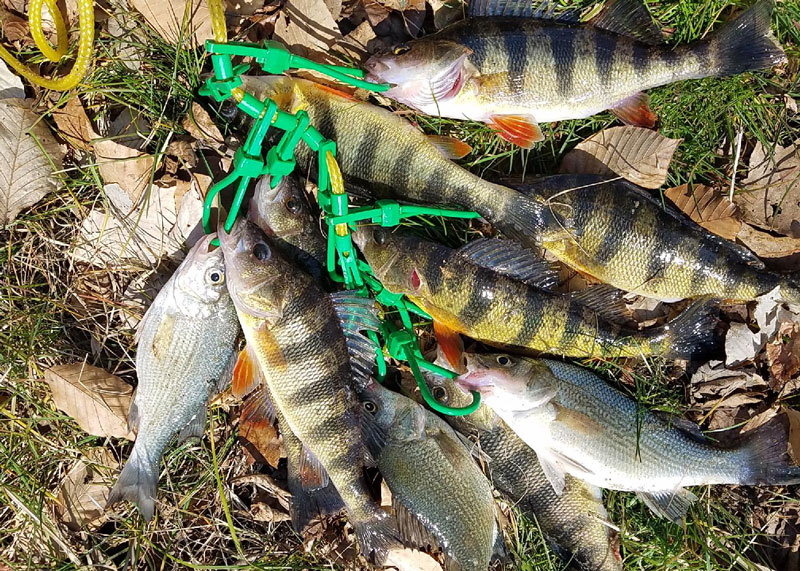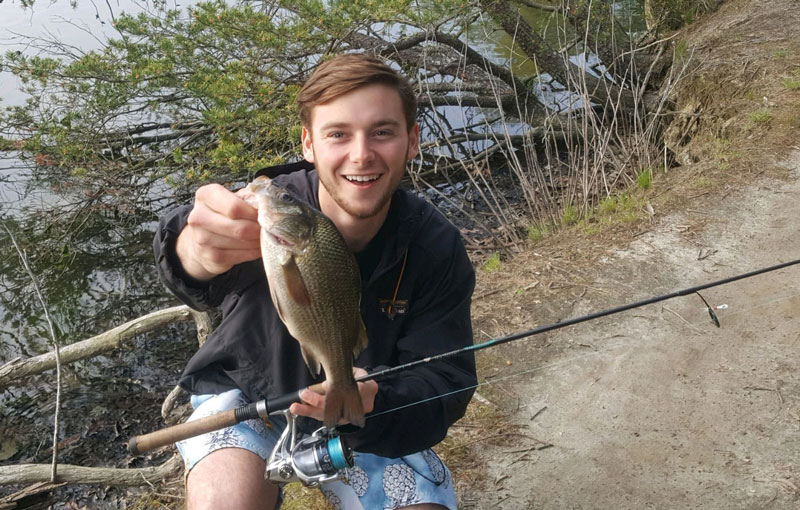As early spring dawns in the Mid-Atlantic region many anglers from Delaware to Virginia will have the same thing on their mind: the yellow perch run in tidal creeks and rivers up and down the coast and along the shorelines of the Chesapeake, which transitions into the spring white perch run. The timing of the run has moved up through the decades, and while April may have been prime time once upon a time, these days the action tends to start in late February and run until early April, with March sitting right in the middle.

The two perch species we pursue, yellows and whites, do follow a slightly different calendar. Whenever the weather may dictate the start of the run, it’s the yellows that will arrive first. Shortly thereafter white perch will file in. Then the yellows begin to thin out, eventually you’ll catch whites alone, and then the run ends as they complete the spawn then move off towards their warmwater haunts. The exact timing of each species’ peak varies from year to year and creek to creek, however, most seasons in most places there’s a strong overlap of yellows and whites for a week or two. If you’re lucky with your timing, you could get in on nonstop perch fishing for a mixed-species bag.
How to Fish for Spring Run Perch
When you want to focus solely on yellow perch bull minnow tend to take top honors, and when whites are the goal grass shrimp often prove best. But when going for a mixed bag those shrimp rule the roost. Yellow perch will hit them almost as readily as they’ll take minnow, while for some reason white perch sometimes seem to shy away from minnow when they’re on the spawning run. This isn’t always the case, but by fishing with shrimp you cover both bases while making the tradeoff with fewer potential downsides.
How you’ll present the shrimp will vary by location. In areas with relatively little depth and relatively low current, threading one (or two if they’re small) on a shad dart that’s just heavy enough to work the bottom is a solid bet. In higher current but relatively shallow areas fishing the dart under a bobber and letting it drift through the target zone can help you reach and maintain the proper depth. And in deep holes or areas with snaggy bottoms it’s sometimes a smart move to rig up a bottom rig, cast it out, and let it remain static until a fish swims by.
Ideally, when depth, current, and snags cooperate (yeah, right!!) the prime way to present a grass shrimp is threaded on the dart and then hopped along bottom in six-inch to one-foot increments. Most of the time the perch will slurp it up as it sinks right before it taps down on bottom, and alert you with a single bump — set the hook immediately when you feel it.
It’s important to note that in order to cast a 1/8th or lighter shad dart more than a few feet and then feel the strike from a seven- to 12-inch fish, you can’t go slinging a seven-foot medium action rod intended for rockfish. A delicate, uber-sensitive ultralight rod rigged with four- to six-pound braid and four-pound leader works far, far better when perch-jerking with shad darts. If you don’t have this sort of setup and you’re not about to buy one, rather than faking it with heavier stuff you’re better off by sticking with the bottom rigs. These you can cast out with a half-ounce to one ounce of weight, allowing you to keep tension on the line as you feel or watch for the bite.

Where to Go Perch Fishing
As we already mentioned, the creeks and rivers that support perch runs are plentiful throughout our region. If you need a starting point or two go to FishTalkMag.com, type “perch” into the search box, and you’ll find plenty of options. Kayak anglers can flip on over to our Paddler’s Edge kayak fishing section, which has a few choice soft launches listed out. In all of these bodies of water, however, you’ll still need to figure out exactly where those fish have congregated.
Perch of both species will gather up in holes and channels downriver of their spawning grounds. These may be a mile downriver or several miles down, depending on the specific creek or river. Look to these areas to hold the action early on and again at the tail end of the run. The number will vary but just as an example, if the tributary you’re on has an average depth of five feet and a channel seven or eight feet deep, holes in bends where depth drops off to 12 or more feet would likely be prime.
During the apex of the action you can expect the fish to be far upriver in areas that are almost entirely freshwater, but still subject to tidal fluctuations. You’ll find some fish above the mini-fall lines in small creeks and rivers, but the majority of the action will take place just below it. These waters can vary from just a foot or two deep, to four or five feet in and around the channels.
Note that on cool, cloudy days the fish may tend to hunker down in the deep zones, and on sunny, warm days head for shallower areas. They’ll vary location by tidal cycles, too, in areas with a significant swing. On low and falling water look to find them in the holes, and on high tide and rising water expect them to spread out into the shallows and move closer to the banks.
Size Matters
We all want to catch and keep bigger fish, but remember that fat female perch don’t have any more meat on them than a skinnier male of the same length does — they just have a belly full of roe. When the perch are biting strong taking home a meal won’t be a stretch, and if you catch a fattie, you might be happier releasing it unharmed and then taking another cast.
March is here folks. The days are growing longer and the temperatures are getting warmer — WOOHOO! There’s no better way to kick off spring than to enjoy some fast-paced perch action and if you time your trip right, that mixed bag will be overflowing.